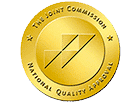The opioid crisis continues to devastate the country, with opioids killing over 140 Americans every day (National Public Radio). A May 2018 research letter by the American Medical Association noted that nearly half of the overdose deaths in 2016 involved fentanyl. One phrase commonly associated with the synthetic is “get high and die,” as drug users can quite literally overdose almost instantaneously.
Fentanyl, a highly addictive synthetic opioid, is 50 times more potent than heroin and 100 times more potent than morphine, according to the Centers for Disease Control and Prevention (CDC). A 3-milligram dose of fentanyl can kill; for comparison, a lethal dose of heroin is 30 milligrams. Fentanyl and heroin are impossible to tell apart with the naked eye, which means that pure fentanyl and heroin cut with fentanyl are indistinguishable from heroin, putting heroin users at even greater risk for overdose.
Other drug users like cocaine users are also seeing the effects of fentanyl, as cocaine-fentanyl overdose deaths are on the rise, according to data from the CDC. “Speedballing,” or mixing cocaine and (fentanyl-laced) heroin, might be one explanation for the correlation. Another is that dealers are cutting the stimulant with cocaine or accidentally mixing it with fentanyl through cross-contamination.
The rise of fentanyl
Fentanyl has been prescribed by doctors for pain since the 1960s, but the man-made drug was not seen on the street in volumes like it is today until recently. Now, drug dealers are pressing pure fentanyl into pills, disguising it as heroin, cutting other illegal drugs with it, and selling prescription fentanyl patches. Fentanyl patches may be worn, or the contents may be removed and injected or ingested.
Fighting overdose?
Vivitrol. Vivitrol, a prescription injectable naltrexone that blocks opioid receptors in the brain, can prevent opioid users from getting high and reduce cravings for opioids. However, because Vivitrol blocks the effects of opioids, there is a higher risk of accidental overdose, particularly when those receiving the monthly injectable come off of Vivitrol. The drug can discourage opioid use— particularly in the first few days after the drug is injected— but it can’t prevent using.
Narcan. Narcan is a naloxone nasal spray used to reverse the effects of opioid overdose. The spray, recently made available without a prescription in thousands of pharmacies across the U.S., cannot be used to prevent opioid use or overdose, however, and a single dose may not be enough to reverse the effects of a fentanyl overdose.
Test strips. Some health providers are taking matters into their own hands. One health care center in Burlington, Vermont, announced in July 2018 that they would give away 3,000 fentanyl test strips to drug users. The hope is that drug users will choose to not use or to adjust their dosage should their supply test positive for fentanyl.
As of July 2018, San Francisco and Philadelphia are the only other cities offering free fentanyl test strips. The question of whether drug users will use the strips remains. Considering the severity of heroin withdrawal— body aches, diarrhea and vomiting, insomnia, uncontrollable leg movements— “dope sick” users might not take the time to test for fentanyl before dosing themselves. If a quick fix to put a stop to withdrawal symptoms is what matters in the moment, what takes priority— a hit or your life?
Reach Out
If you or a loved one is ready to begin recovery from opioid or substance addiction, we are ready to help. Royal Life Centers is a full-service medical detox and treatment network treating dependence on alcohol, opioids, methamphetamines, benzodiazepines, and cocaine through medication-assisted treatment and research-based therapies. Please reach out to our admissions team at (877)-RECOVERY at any time with your questions or concerns.




